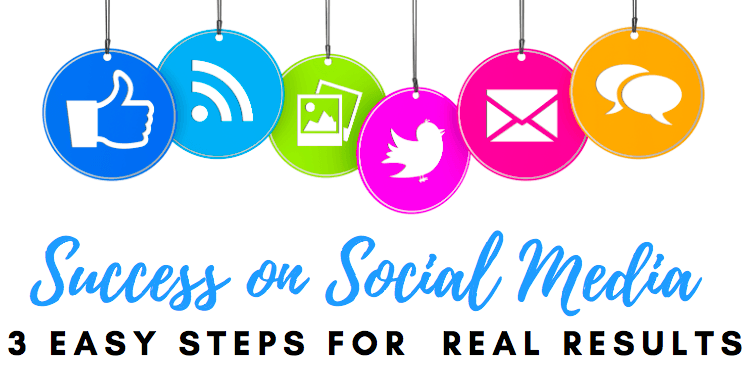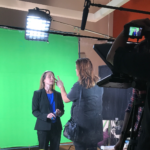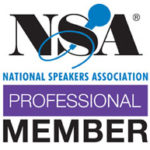Have you noticed people multitasking or being intellectually lazy during a virtual meeting? Are you zoning out, suffering from zoom fatigue?
If you feel like no one paying attention when you speak (or in online meetings in general), this episode is for you.
In this episode of The Career Rx we’ll discuss:
- Four common but terrible ways to end a presentation
- Three of the best ways to close your meeting on Zoom
- How to keep your professional persona sharp, especially virtually
Today we’re going to be talking about the best and worst ways to end a Zoom call. Inspired by a question from a listener, “people are so numb to Zoom these days, it seems like everyone is multitasking and everything feels like a waste of time. How can I make my meetings actually matter?”
In this episode I’m going to give you four of the worst ways to end a meeting, and three of the best ways to sign off a video conference call. My purpose is to help you avoid some of the very common but deadly videoconference errors – these are mistakes that most people don’t even realize are costing them professional status and eroding their executive presence.
“It’s a cycle – people are multitasking because presenters have become intellectually lazy”- Marjorie Stiegler
In this Episode:
[1:04] Others notice when you’re not 100% present in a virtual meeting.
[2:30] Are you surprised you’re out of time?
[5:30] Quit thanking people for the wrong things
[6:00] Please know your slides better than this
[7:50] What do you want people to take away?
[9:30] This snafu will (sadly) kill your executive presence in an instant
[11:05] What’s your call to action? (Next steps beyond the meeting)
[13:30] A good closing always includes this
[15:10] A few other helpful episode resources that you can apply immediately
Links and Resources:
The Branding Rx 18 hours of CME, mastering digital strategies for advancing your career, building your business, and growing your professional brand
Episode 21 – 8 Pro Tips for Virtual Meetings, Presentations, and Webinars
Episode 15 – 5 Powerful Tips to Nail Your Public Speaking Q&A Session
Episode 4 – 10 Professional Tips To Improve Your Public Speaking Skills
LISTEN TO THIS EPISODE:
SUBSCRIBE TO THE CAREER RX PODCAST:
Get every episode on your preferred player…
Apple Podcast | Google Podcast | Spotify | TuneIn + Alexa | iHeart Radio
More for you:
Book:
Courses:
The Branding Rx 18 hours of CME, mastering digital strategies for advancing your career, building your business, and growing your professional brand
The Speaking Rx learn the business of professional public speaking to establish yourself as a thought leader you are, and get paid for your speaking expertise
Industry Insider – learn exactly how to land a rewarding nonclinical career without a new degree, connections on the inside, prior experience, or a pay cut
Launch an Online Course on Any Budget – know your course will sell before you spend any time or money to create it; plus, the exact logistical blueprint to get paying customers and a way to deliver your course without spending a dime (ready to scale up when you are!)
Let’s connect!
Twitter | Instagram | Facebook | LinkedIn
Thanks for joining me on this episode of The Career Rx!
Please be sure to leave me a review on Apple and don’t forget to send me your questions so I can answer them and give you a shout out on a future episode.
TRANSCRIPT: Episode 50 – Best and Worst Ways to End a Zoom Call
Hey there, welcome to The Career Rx. I’m your host, Marjorie Stiegler. This podcast is all about the important stuff. They don’t teach you in medical school, about how to treat your career, like the business it really is, and how to be strategic about your success. I’ll show you how to use modern strategies to get ahead, create your own path, and do more of what you love. Every episode is inspired by questions from listeners just like you. So be sure to subscribe and of course, send me those questions, so I can use them on a future episode. So you don’t miss anything, be sure to always check the show notes on my website. Are you ready? Let’s get into it.
Hey, there, welcome back. Today we’re going to be talking about the best and worst ways to end a Zoom call. And as per usual, this episode is inspired by a question from a listener. This was short and sweet. This listener writes in and says, people are so numb to Zoom these days, it seems like everyone is multitasking and everything feels like a waste of time. How can I make my meetings actually matter?
So that’s a great question. It does feel a little bit sad and pessimistic. I hope that people’s meetings are not a waste of time. But I do hear you, I know what you’re saying. It can feel like a waste of time. And if we’re all sitting around, sort of connected, but you can tell from looking at other people’s that they aren’t really paying attention, that they are multitasking, folks aren’t listening folks are not engaged, then it certainly can feel like all that time that you spend on Zoom, or whatever your other platforms are, can feel like a waste of time. And especially if you’ve been tasked with leading the meeting, and you want to do a good job, you want to show up with your best professional presence, you want to wrap things up in a way that feels important.
So, there’s a lot we could say about how to have a good Zoom call, right and a great way to start great ways to stay engaged. But today, I’m going to focus on the end, because I think a lot of times the end is what lasts, what lingers. It’s what gives that lasting impression right beyond that first impression. And I think there are just a handful of things I’m seeing as themes, again, and again, on Zoom calls, that I’m on and Zoom calls that folks tell me about, as well as webinars and other conferences that I watch and attend. So there are some habits that people have that just a few tweaks can make a big difference for your colleagues, or for the audience for whoever else is on that meeting with you, that I hope will make it feel like it matters, right? That was the question.
So I’m going to give you four worst ways to end and three best ways to end.
Alright, one of the worst ways that you can end your Zoom call is just surprised, you seem to have run out of time. If you go all the way up to the end of your meeting time or your presentation time, and you are not done. So you yourself as the presenter as a speaker or the person leading the meeting, feel somehow surprised that you ran out of time, this is a huge way to kill the impact of your meeting, you may not have gotten around to some of the most important parts, which are often the summary or the wrap up or the action items. But also, nothing says I didn’t prepare, like being sort of surprised that it took longer than the allocated time. And one of the reasons I think why so many people are multitasking and checking out is because they do feel like people have become really intellectually lazy when they show up. For these Zoom calls, our meeting structures have gotten much more lazy. People are not really expected to participate, or to show up in quite the same way. And that’s a sort of self-feeding cycle where when we feel that people are, who are showing up or not prepared, then we don’t feel like we need to prepare. And it’s really just there’s a lack of respect for people’s time and effort. And that underlying lack of respect, really, I think does make people feel like these meetings are a waste of time at the end, you don’t want it to have felt like a waste of time. And if you haven’t gotten around to the punch line summary, the action items, the most important parts, because you ran out of time. And and critically, because you’re kind of surprised that you ran out of time. I mean, it’s one thing if you’re having really great conversation, super engaged, people are staying and you need more time and you want to have a follow up. That’s a little bit of a different scenario than just you know, you’re presenting some slides or some ideas and you just kind of run out of time, or your agendas too packed with different presenters and different things you’re trying to cram into the time and so you’re surprised that you’ve ran out of time.
So your closure of the Zoom call is going to be really abrupt. “Sorry, we didn’t get to it”, all apologetic and that’s just not a way to make it seem like people have spent a good chunk of their time.
All right, another terrible way to end a Zoom call is when you, the presenter, seems surprised that you’re out of slides. So this is true also in real life when you’re giving a presentation, and you kind of get to the end, and you’re, “Oh, I guess that’s all I have.” This is not a powerful way to end a call, if you yourself don’t even know your material, or what you’re intending to communicate enough to know that you’re at the end. That also shows just that lack of preparation. And it shows a lack of intent and purpose in the meeting, if you’re not even aware that you’ve gotten around to the conclusion, or one of the most important parts. I’m amazed at how often I see this, people are flipping through, flipping through, flipping through, and then they’ll just sort of say, as if caught off guard. “Oh, I guess that’s my last slide.” Or “Oh, I guess that’s all I have.” Please don’t do that. Ideally, you shouldn’t be surprised when you are out of slides. And so don’t say anything that makes it seem like you are somehow surprised that you’re out of slides, very anticlimactic way to finish any kind of presentation, including a Zoom presentation.
All right, third on my list of worst ways to end a presentation or call is to say is to thank people for coming and listening. Now, don’t get me wrong, I know a lot of people are going to not understand me at first, like “what’s wrong with thanking people for coming and listening?” But look, if you’re thanking somebody for literally just showing up and listening for coming to your Zoom presentation, then nothing says that your ideas are not worthwhile more than you having to thank someone for sitting through it. Now it’s a great thing, thank people for their ideas for their participation, possibly, even if they’re just a listener, for their dedication to a cause, right, or something like that. It’s so there are many ways you can say “thanks” and appreciate your audience, but don’t thank people for coming. Or thank people for listening. If you start to pay attention all around you, you’ll see that that’s how a lot of people close their webinars, they close their meetings, people will close their podcasts, people will close their presentations in big auditoriums like that all the time. Thanks for listening, thanks for coming. If somebody has important information that’s truly impactful, that matters to you in the audience, they do not need to thank you for listening to it or thank you for attending. In fact, “it” the content that’s being delivered, should be something useful, it should be a gift to you, the audience member. So if you are putting together a meeting, and you’re thinking about what’s going to be discussed what is going to be delivered, I certainly hope it’s something of value, something that is a gift in some way that is actionable to the audience that they need to know even if it’s not something that they love. I mean, it might be just a new policy or procedure, but something they need to know and embrace and do something different. So it is really again, really anticlimactic and deflating to deliver a bunch of information and then to say, “Okay, well, thanks for listening.” That’s not a powerful way to end your call. And it’s not going to help anyone who attended to feel like that was a good use of their time. Because what it sounds like is they’ve done you a favor by showing up. And we don’t want to give that impression.
All right, number four, on my list of the worst ways to end a Zoom call, or to not be able to figure out how to end it. So this technology I know is new for some but we’ve actually been in pandemic mode for quite some time now. And you should be able to take some time in advance of any kind of presentation and familiarize yourself with the platform. So please know how to turn it off, how to turn off your camera, how to mute yourself, how to come off mute, how to put yourself back on camera, and how to hang up. I have seen way too many snafus with people that are respected leaders who suddenly somehow seem to not understand how their computer functions and they don’t, they’re fiddling with buttons, they’re trying to turn things off. Or they think they’ve turned it off. But actually they’re still on whether it’s, you know, video audio is some part of it. So, if people can see you fiddling around, that’s not really a power close for sure. And if you think you’re off but you’re not and you go about doing something else, again, that this is all very sort of virtual focused, but those are definitely not power ways to close your Zoom call. And while it may not make people feel like that meeting or that presentation was a waste of their time. It will reduce their opinion of you, right? It’s going to, it’s going to have some kind of an effect on this sort of public estimation of you, if you cannot figure out how to leave the room, essentially. This would be almost akin, in real life, to you know, kind of tripping on the doorway on the way in or out. It’s not anything that’s, you know, it doesn’t speak to your character or anything, that’s, that’s important. But you want to put forth the best professional image that you can, and not being able to figure out how to come on and off mute and how to leave your own meeting is certainly I think, not putting your best executive self forward.
So those are four of what I think are the worst ways to end your Zoom meeting.
Now, if you want to have an impactful meeting, of course, it’s important to have an impactful meeting, right, to deliver important content, to have good conversation, good dialogue, good participation.
But when you’re closing, one of the best ways to close is to be sure that you have next steps fully outlined. So it’s good to summarize your meeting, and to say what’s going to be next, especially because everything is virtual, and the next thing will most likely be virtual, right? Should people expect another calendar invitation to a follow up meeting? Should they expect to receive perhaps the slides that maybe you were just sharing? Should they expect to receive some other email communication? Maybe it’s not something that you’re going to be giving, but something that you want to get. So perhaps, if you would like to have follow-up with some of the leaders on the call, you might ask for that, sort of close the deal before you hang up. But it this is just as true in public speaking, as it is in digital calls, people want to know what’s happening next, they want their marching orders, they want some type of a call to action. And even if that call to action is be on lookout for my email, or be on the lookout for this next calendar invitation, or be prepared, I’m going to follow up with you in you know, a quarter or six months or next week or whatever it is, people want to know what is going to happen next. So that’s a really good way to close your meeting is by telling people what are the next steps; what’s happening.
Another great way to wrap up and close your meeting is to link back the purpose of the meeting to the people who are on the call. Why are the people on the call? Even there? Why were they invited? Why is their participation or their listening digesting, you know, listening to your ideas, thinking about what you’re sharing? Why is it important? And so this is linking what you are sharing or your agenda items, your content, whatever the case may be, to why it should matter to those specific people. Now, obviously, and I’ve talked about how important it is to have a good power open and to have good content delivery throughout. It’s important to let people know right up front, why it matters to them, they should know that in the invitation, they should know it before they even sign on. But remind them of it. And I think one of the best times to remind them about it is before you close. So it should be before those action items, but remind people, you know what you want them to do with it, how they will use what you’ve just shared. Or why it’s so important that they, specifically, are hearing this, right? What is the intended reason for them being the audience? Link it to their purpose, into your purpose, to the organization’s purpose, and just remind people why should this be important to them. So the question really was, you know, how do I make this matter? People are not finding things to be important to them because they’re multitasking all over the place.
Sometimes just that very direct link of why this should be important to them, why it matters. And again, connected to what you want them to do with it is really, really powerful. And then people will be reminded of what they’re doing there. And they will, I promise you, hang up with a totally different feeling about how they’ve spent that time if you make sure that you have linked too tightly to the people on the call and your purpose for having those people on the call.
Now, obviously, my purpose with this podcast is to help you get ahead professionally. And my purpose in this episode is to help you avoid some of the very common, but you know, sort of deadly Zoom errors. So a podcast episode is pretty short. You’re the one who decided to listen to it. So I might not need to remind you of that right now before we close but I’m going to anyway, just to make the point. Right, this is what I want for you to get out of this episode, I want for you to feel that confidence that you don’t have to be just delivering some kind of a meeting to a bunch of people who are not paying attention, who are not listening to you who will feel like it’s a waste of time, and who are multitasking. If you can avoid, you know, habitually some of these kinds of endings that a lot of people find themselves closing with and if you can be sure to pack in there. A link to the purpose to the audience, and action items/next steps are really, really important.
Speaking of next steps since we are living in this virtual world, if you haven’t had a chance yet, go listen to Episode 21 of this podcast. You can find it at marjoriestieglermd.com/episode21. It is all about virtual tips for how to give a really great presentation, including some of the things at the beginning, right? Wow to make that power open, how to be sure to keep people engaged, how to be sure that this is going to be what we call evergreen, right? It’s something that can be appropriate when someone’s catching the replay, when they’re watching it later, as people are often doing these days. With things virtually, I also want you to check out Episode 15, which is all about how to nail Q&A. Now I delivered this episode, back before COVID. So I was thinking about live audiences at the time, but I still think those principles will apply to you and the work that you’re doing now.
Also check out Episode 4, which has 10 pro tips for public speaking really taking your delivery to the next level. Some of these will apply, I think to your digital encounters, like Zoom, but also we are definitely going to be showing up in person in conference rooms and at podiums again, eventually. So these will be, I think of interest to you. And they will help you to take your presence and your delivery and the sort of “so whatness” about the meetings and the presentations that you give and really elevate that. So those are your marching orders, go check out episodes, 4,15, and 21. All about sort of delivery of public speaking, handling of q&a during public speaking, some of it is virtual, some of it is live, all of it is going to be relevant to you.
So go forth and have some meetings, have some presentations, deliver some webinars, do some stuff that matters to people and make sure they feel like that was time well spent. That’s it for today’s episode. Bye for now.
Thanks for joining me on this episode of The Career Rx. Be sure to leave me a review on Apple podcasts or whatever podcast player you’re using to listen today. And definitely send me those questions so I can answer them and give you a shout out on a future episode. Bye for now.








